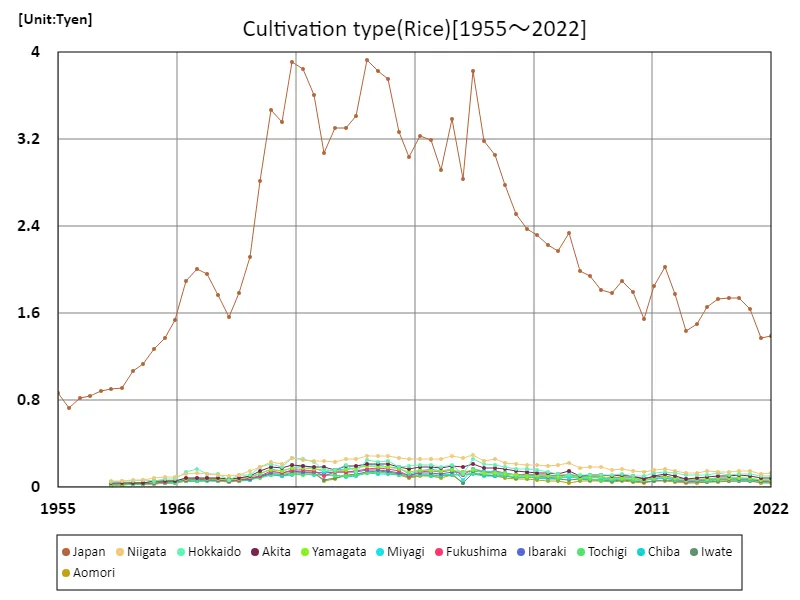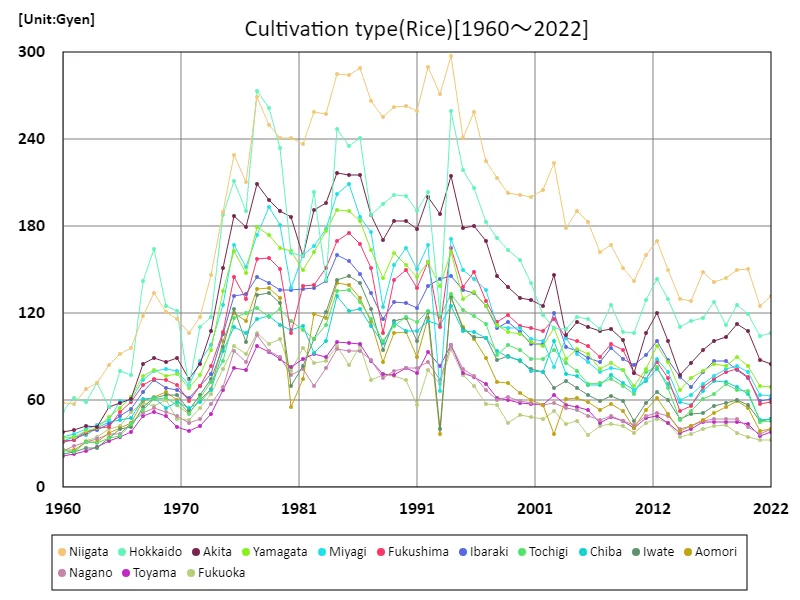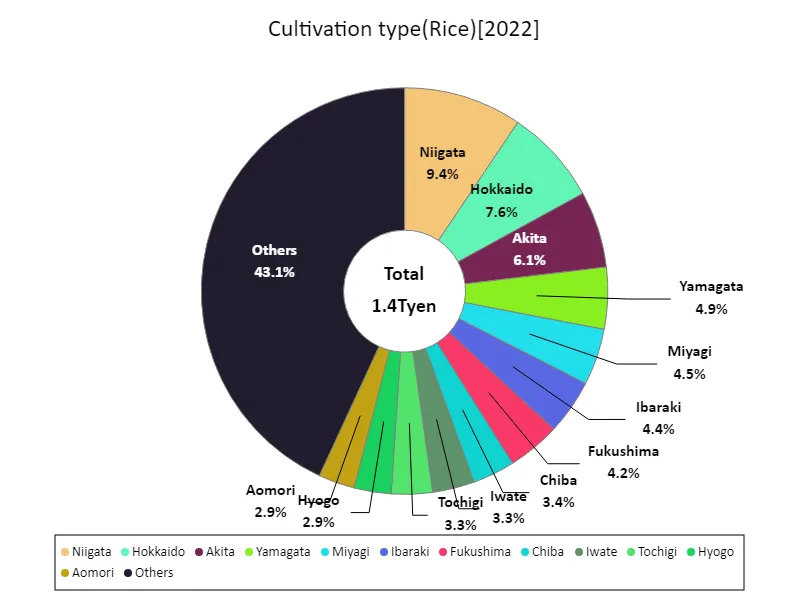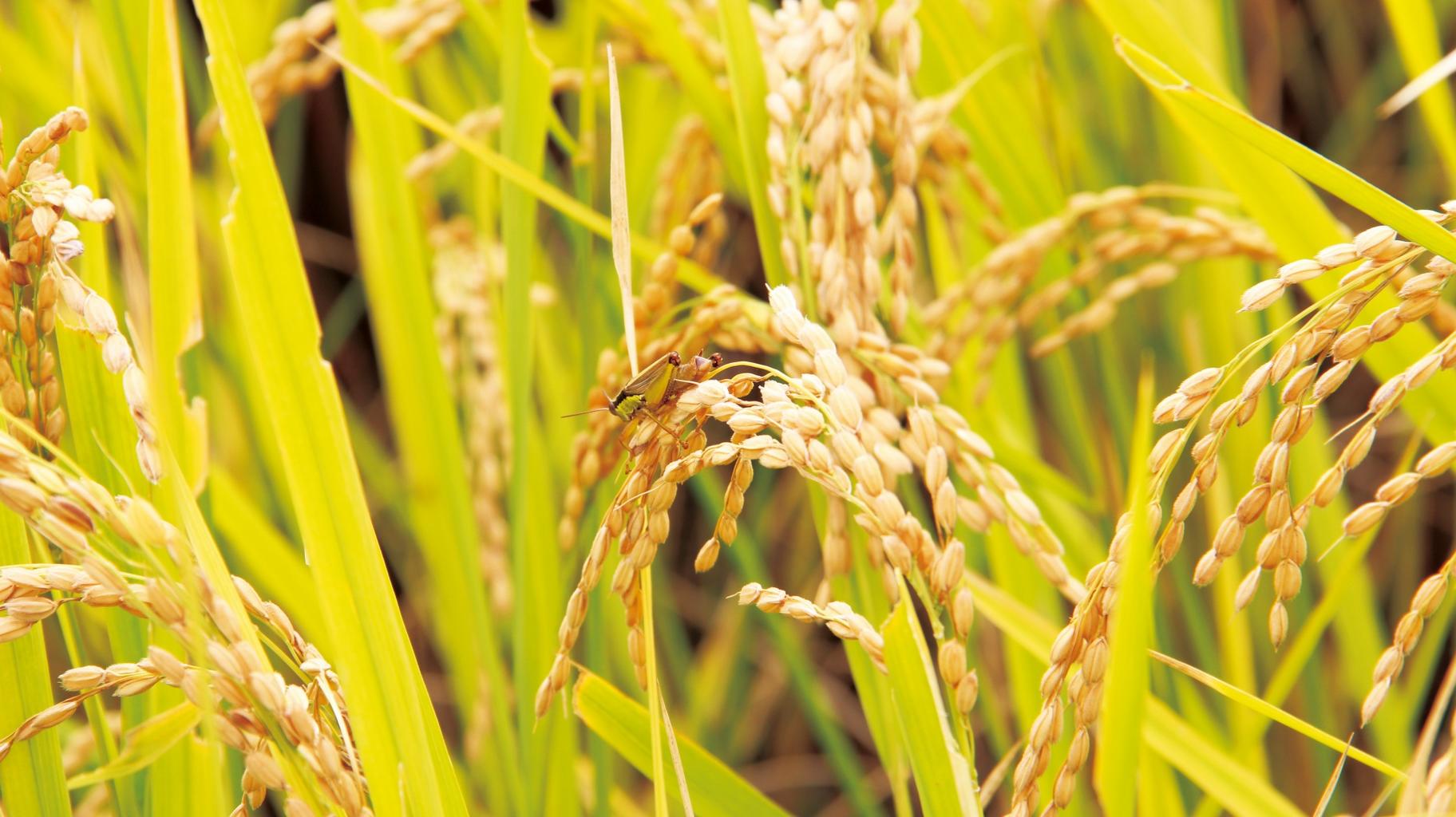Abstract
Income from rice cultivation in Japan’s agriculture will reach 1.39 trillion yen nationwide in 2022, highlighting its importance. This figure reflects the high status of rice in Japan’s agricultural economy. Based on past trends, rice is Japan’s major agricultural product and an essential part of the diet. Rice plays a major role as a source of income for farmers and also contributes to the local economy. Another factor is the improvement in productivity of cultivated rice due to technological innovation and policy changes. It is expected that rice will continue to occupy an important position in Japanese agriculture.
Rice production income
Income from cultivated rice in Japanese agriculture shows consistent characteristics when considering data from 1955 to 2022. The national average peaked at 3.93 trillion yen in 1984, and although it has fluctuated since then, it has now fallen to 35.5% of that amount. This indicates that the relative importance of the agricultural sector is declining due to factors such as agricultural modernization and economic changes. Other factors including urbanization and a shrinking workforce also play a role. However, agriculture in Japan remains important, and technological innovations and changes in agricultural policies are helping to improve productivity and strengthen sustainability. Going forward, promoting agriculture and revitalizing the local economy will remain important issues, which could lead to an increase in agricultural income again.


The maximum is 3.93Tyen[1984] of Japan, and the current value is about 35.5%
Rice production income (by prefecture)
When considering data on Niigata’s rice cultivation income in Japanese agriculture from 1960 to 2022, trends in specific regions are clear. After hitting a peak of 298 billion yen in 1994, it has now fallen to 44.3% of that amount. This trend is one of the factors affecting Niigata’s agricultural environment, including urbanization, a decrease in the labor force, and structural changes in agriculture. Other factors that have an impact include domestic and international competitive conditions and climate change. However, Niigata is maintaining its position as a rice-producing region, and efforts are underway to achieve sustainable agriculture through technological innovation and the introduction of agricultural policies. In the future, flexible responses to regional characteristics and changes in demand will be required, and stabilizing agricultural income and revitalizing the regional economy will become important issues.


The maximum is 298Gyen[1994] of Niigata, and the current value is about 44.3%
Rice production income (latest year, prefecture)
In 2022, total income from cultivated rice in Japan’s agriculture will be 1.4 trillion yen, with Niigata recording the highest amount at 132 billion yen. The average income was 29.8 billion yen, which represents a portion of Japan’s overall agricultural economy. This data shows that agriculture plays an important role in Japan’s economy. It also becomes clear that Niigata is a major producer of cultivated rice. This is likely the result of a combination of local climatic conditions and advances in agricultural technology. Furthermore, Japanese agriculture is also considered important from the perspective of sustainability, and agricultural policies and technological innovation are contributing to increasing agricultural incomes. In the future, agricultural development and revitalization of the local economy will be required, and various initiatives will be necessary to achieve this.


The maximum is 132Gyen of Niigata, the average is 29.8Gyen, and the total is 1.4Tyen



Comments